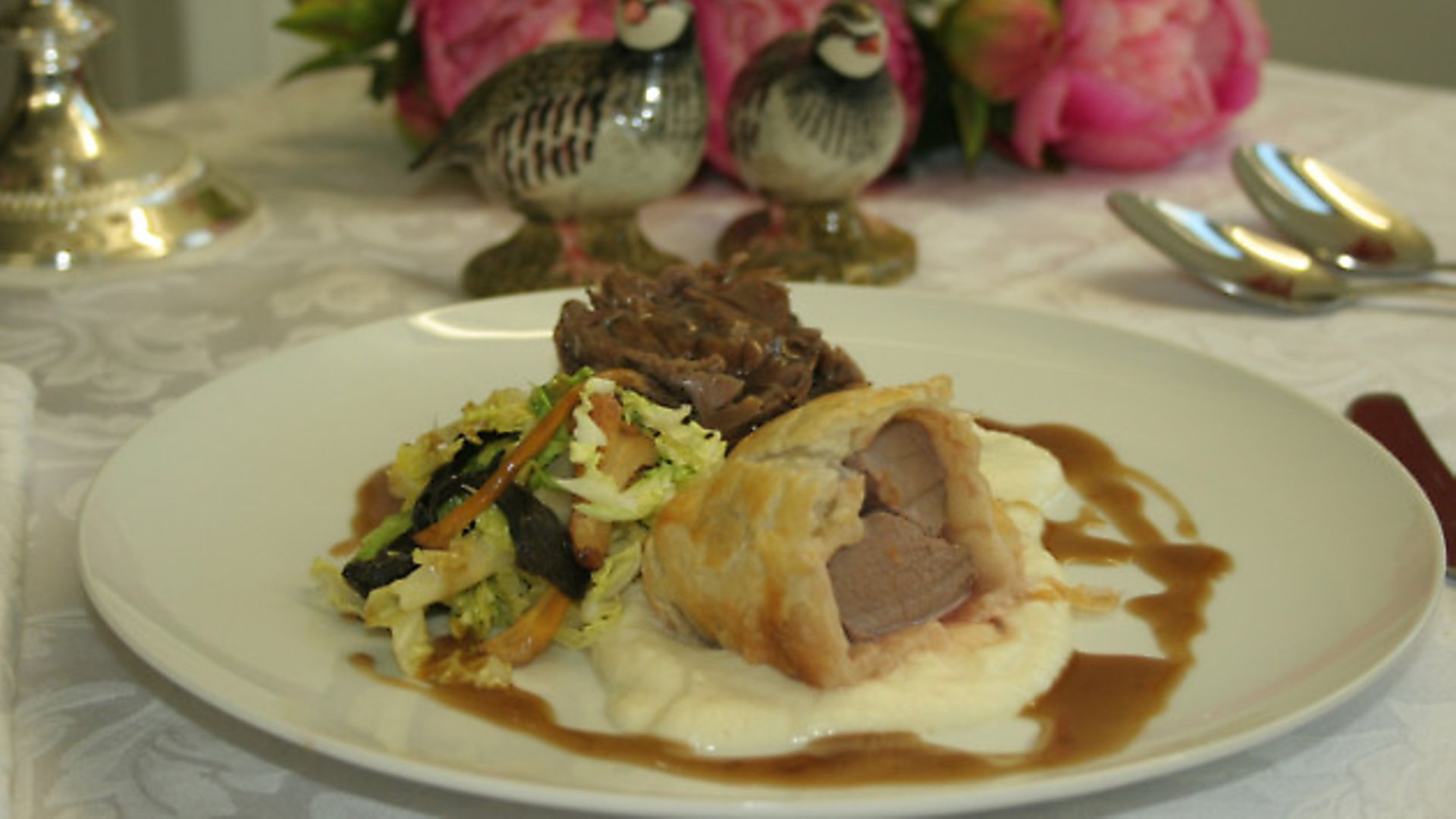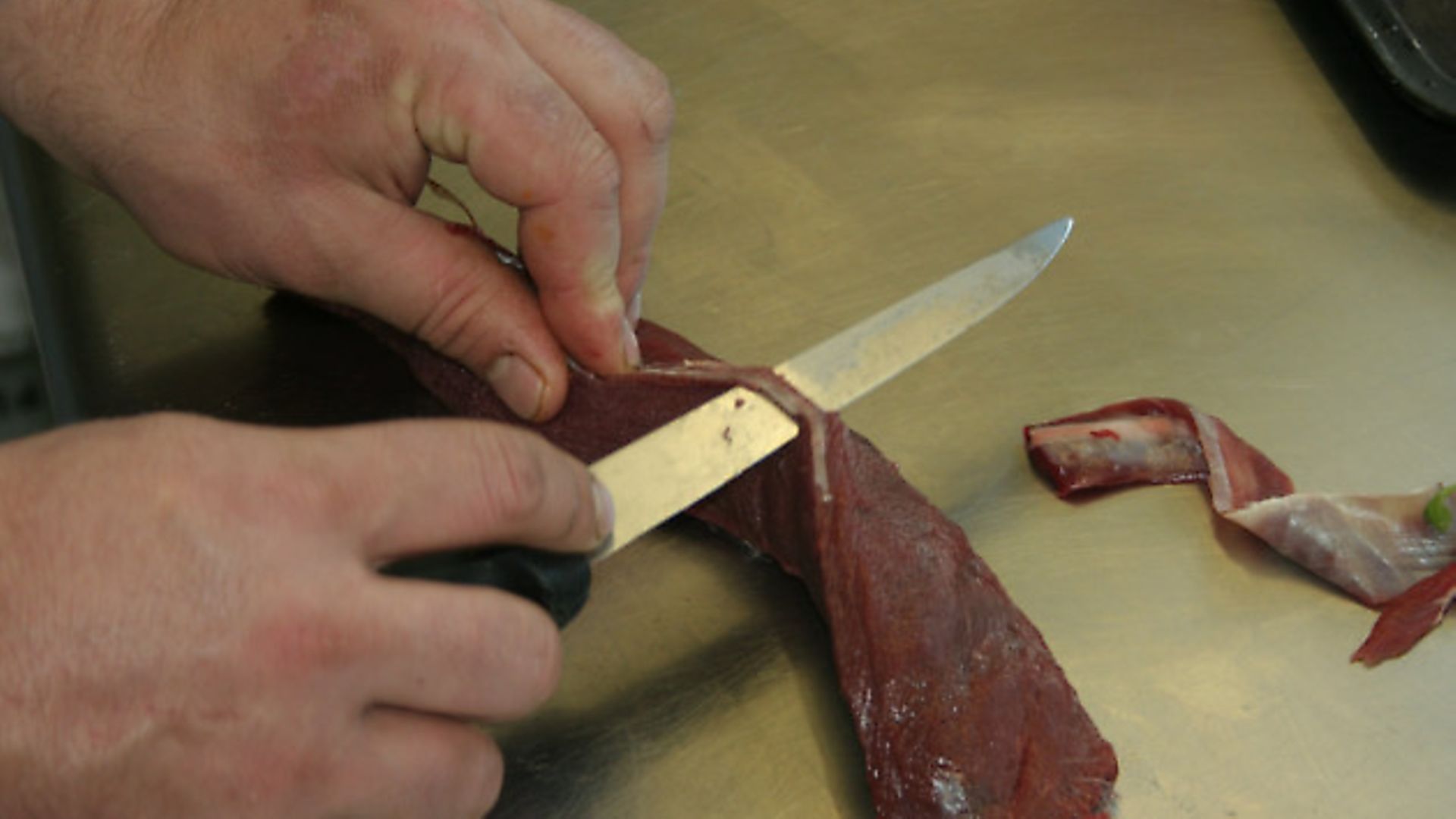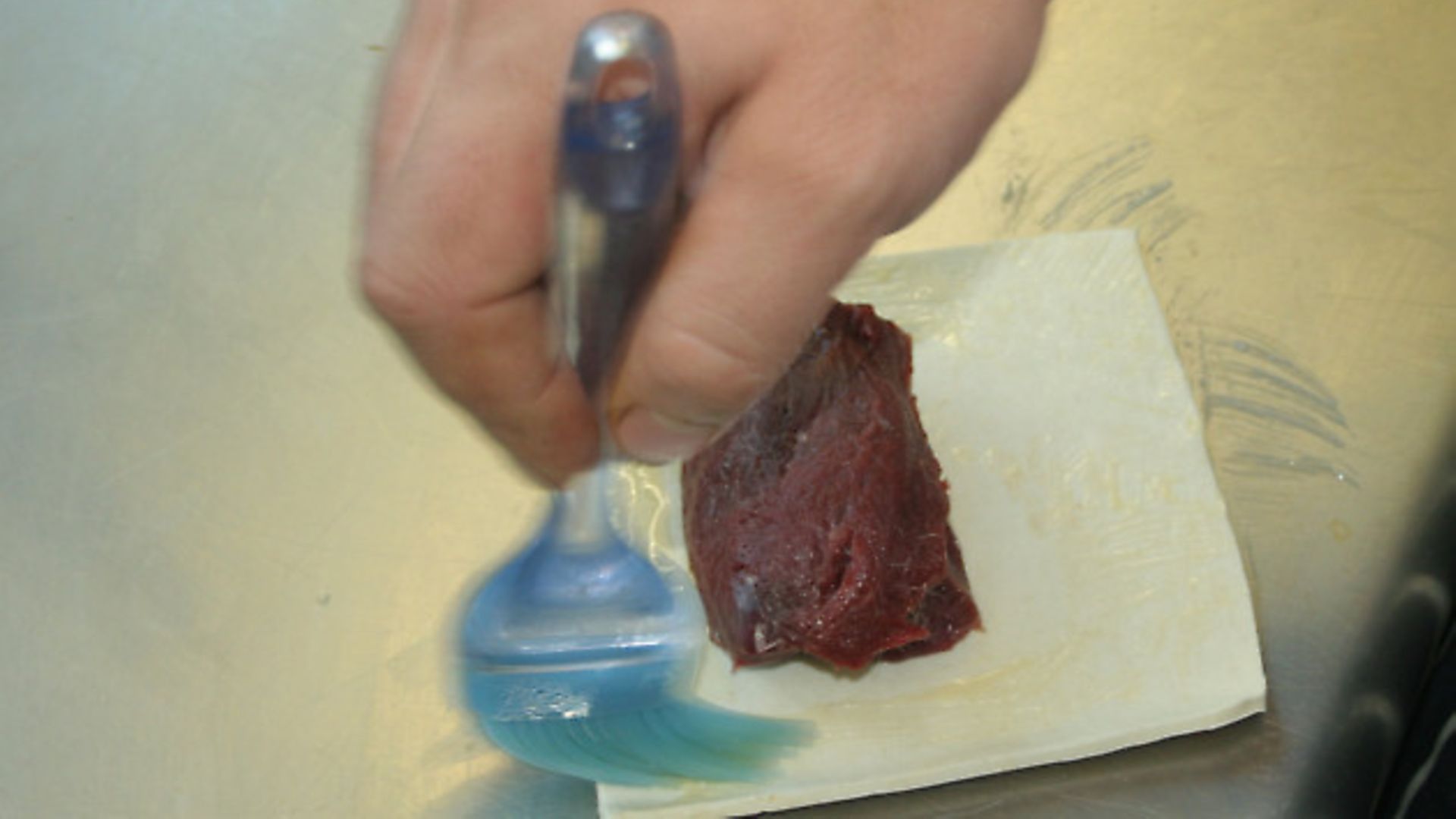Fillet of venison en croute with braised shoulder, savoy cabbage, celeriac purée and proper gravy
 credit: Archant
credit: Archant
Before I launch into a large rhetoric about the complexities of the perfect gravy, misconceptions about catering and other issues, I would like to point out that all the basics I’ve mentioned in my previous articles still stand. Don’t attempt things that are wildly beyond what you are comfortable with or you may take on undue pressure.
 credit: Archant
credit: Archant
Some of the greatest meals you can eat are made with a few simple, well-cooked ingredients, so don’t feel that a lack of adventure will render you incapable of impressing. Although, when you read this month’s recipe – assuming of course that you haven’t lost interest due to a lack of gripping sporting anecdotes – you may think that I am contradicting myself.
 credit: Archant
credit: Archant
This time we are going ‘minted’, and after a year of Game Fair cancellations, bad weather and all the misfortunes a man could conceive, writing about an expensive meal requires a stretch of memory for me. Fortunately, for this minted dish we are going to make it a bit cheaper than usual by making the less expensive parts go further and add value to the meal by putting in the hours.
Now, let’s look at gravy jus perfection. We want to have thick, but not heavy, gravy and we want it to have a shine and depth of taste. How do we get this? It is not that difficult to do; we need to make a really good gelatinous stock. “Oh right,” I hear you say, “and how exactly is this done?” Normally you would add some pork bones, cheeks, tails or trotters. However, I don’t believe this would make a real venison gravy, so what I tend to do is take all the sinewy parts of the deer that many people throw away and keep them for the gravy. The parts that you must under no circumstances throw away are the yellow gristle running down the neck, the Achilles tendons, the shins (we will get on to that in a second) and all the shiny bits you trim off the prime cuts.
The passion for proper gravy does lead you to two startling conclusions. One: the proper gravy literally uses every part of animal that is not normally cooked, and two: if you cool down the perfect gravy it sets (this is a sign that when heated it will flow around the plate perfectly).
As I have been mentioning throughout this Ultimate Game Feast series, you need to level up the supply with the demand, so what you are really aiming to do is use the whole animal to feed every dinner guest. Therefore, in an ideal world you would have five deer to feed 100 people, with each person eating 5% of the fillet, 5% of the prime cuts and 5% of the shins and bone. Bearing in mind that we don’t want to turn this into a maths article, it’s clear that there are a lot more prime cuts than there is fillet.
A good trick to make venison go further is to pack the fillets into a Wellington. You could, by the same token, put the fillet into a pie, but that does seam a crying shame in terms of waste. The advantage that the former has over the latter is that the meat will be served pink, which prime cuts like fillet really should be.
One more thing that at times we can all lose sight of is that a Wellington is much easier to get perfectly cooked than a steak, and it is a recipe that ‘scales up’ easily. This means that if you have a 100 people you can cook a Wellington yourself, but if 100 people wanted perfectly cooked steaks within a ten minute window, not even the best chef could get that done.
Now, on to the recipe...
Fillet of venison en croute with braised shoulder, savoy cabbage, celeriac purée and proper gravy.
For the gravy you need:
- venison bones
- carrots
- red onions
- celery
- leeks
- all the trimmings of sinew
- shoulder of venison
- half a bottle of port
For the venison Wellington fillet:
- one trimmed fillet
- 500g mushrooms
- 200g butter
- decent puff pastry (I make mine but you can now buy good stuff)
For the final touches:
- 1 celeriac
- 2 pints of milk
- 200g wild mushrooms
- one savoy cabbage
FOR THE GRAVY
1. Start off making the stock by roasting all the bones with the veg for 30 minutes
2. Put the bones and veg into a large stock pot and turn on the heat
3. Pour water over the roasting tin and with a whisk loosen all the brown sticky stuff left over from roasting the bones and veg, then pour that water into the pan
4. Part-fill the pan containing all the bones and veg with water and boil hard for 2 hours
5. Add the shoulder of venison into the stock pot and let it simmer unti lthe shoulder falls apart (around 4 hours)
6. Pick all the meat off the shoulder and place it in a mould. Pour a little stock over it and place in the fridge with a weight on it
7. With the remaining stock, bring the heat up high and reduce the stock right down - by at least half
8. In a separate pan, bring the post up to the boil and evaporate the alcohol off. Using a sieve, strain the stock out of the stock pot into the port
9. Reduce the stock to taste, add a small knob of butter, salt and pepper
10. You may need to add some cornflour to the gravy if it needs thickening, but if you had enough gristly bits left over from the roasting pan then you won’t need to.
FOR THE VENISON WELLINGTON FILLET
1. Pan fry the fillet for six minutes, turning it as you go
2. Place in the fridge to cool
3. Put the mushrooms into a food processor and blitz to a purée
4. Cook the puree in a pan until there is no moisture separating from the purée
5. Add butter, season to taste and place in the fridge to cool
6. Cut the fillet into ten portions
7. Roll out the puff pastry so taht it is roughly 2.5 times the length and 2.5 times the width of your portions
8. Place a tenth of the mushroom purée in the centre of the pastry, place the venison on top and brush the pastry with egg wash
9. Now fold the corners into the centre and you have your Wellington.
FOR THE FINAL TOUCHES
1. Peel the celeriac, dice it an dplace it in a pan. Pour milk to cover it
2. Boil until soft, strain and keep the milk. Put the cooked celeriac in a food processor
3. Blitz until smooth then slowly add the milk, and either keep it warm or, if you did it the day before, reheat it
4. Place the Wellington in a preheated oven for 15 minutes at 220 degrees
5. Place the braised shoulder (from your mould) in the lwer oven to warm through
6. Slowly fry the pancetta pieces in a large pan with the wild mushrooms
7. Thinly slice the cabbage and add to the mushrooms and pancetta. Sauté until just tender
8. Heat up the gravy
9. When it’s all ready, serve and enjoy!